Riding in the backcountry is balm to frazzled nerves and the stress of our everyday lives. If you’ve always wanted to take your horse on an overnight pack trip but didn’t know where to begin, here are some ideas to get you started.
“Because a pack trip is essentially camping with horses, having camping experience is helpful,” explains Karen Saner, a founding member and board member of the Teton Back Country Horsemen of America chapter, as well as a delegate to the Wyoming State BCHA board. Saner and her husband Donald have been packing for more than 25 years in the rugged backcountry of Wyoming. In addition to camping familiarity, Saner says one of the most important steps is to practice with your horses before going into the backcountry.
Click here for a packing list for your horse camping trip >>
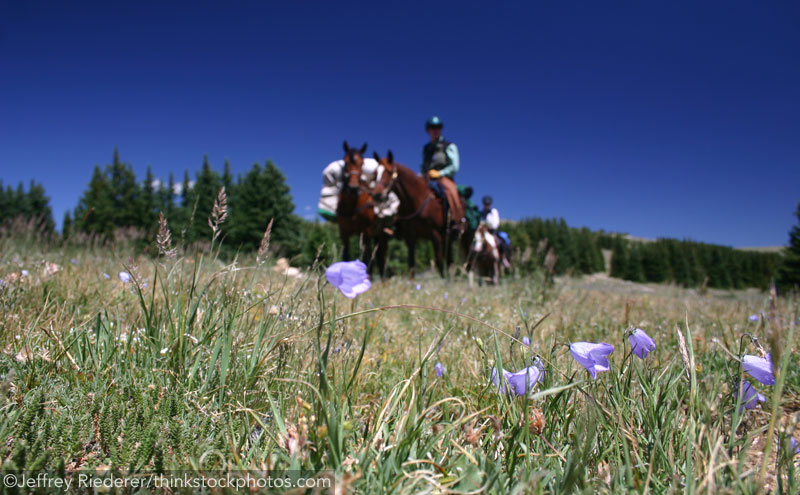
Pre-Trip Training
Here are few areas to explore in the weeks leading up to your trip date. If you can check them all off, your first pack trip is more likely to be an enjoyable experience.
- Trailering: loading and unloading calmly in a variety of places, including on uneven ground.
- Obstacles: easily negotiating the variety of trail features you might encounter, such as creek or river crossings, downed trees, rocky terrain, bogs, steep terrain and single-track trails; calmly encountering hikers, backpackers, mountain bikers and dirt bikers.
- Containment: willingness to stand tied quietly for long periods of time; familiarity with being tied on a high line; acceptance of hobbles; understanding of and respect for temporary fencing (e.g., electric fence with solar charger or rope corrals).
- Packing loads: calmly packing loaded panniers and standing patiently while gear is being attached to pack saddles and riding saddles.
- Being ponied from another horse or led in a pack string.
- Miscellaneous trail manners: acceptance of rustling noises (i.e., putting on a rain coat while in the saddle or unfolding a trail map), quick movements (animals alongside the trail); drinking out of running streams; being mounted from both sides.
Plan Your Route
“Before you pack the saddle bags, do some research,” says Saner. “Contact the U.S. Forest Service office that oversees the area and the local Back Country Horsemen of America chapter, and talk with trail riding groups and outfitters who guide trips in the area.”
She adds, “Ask about trail conditions (whether trails are passable, not muddy or covered with downed trees), closures, availability of grazing areas, water sources, fuel sources and other information.” You’ll also want to research average weather for the time of year you are planning your trip.
Long, established trails, such as the Colorado Trail and the Pacific Crest Trail, have websites with trail conditions, maps and other information. Some popular areas may require a permit for access, so be sure to check ahead and allow for processing time.
Some backcountry areas may require you to use existing campsites. In others, you can locate your camp where you like. Having water nearby is helpful, but to minimize impact camp at least 250 feet from water sources and 100 feet off the main trail.
Containing Your Horse at Camp
“Typical methods of keeping your horses at camp are high lining, hobbling and temporary fencing,” says Saner. A high line is a length of rope stretched at least eight feet above the ground between two trees. Lead ropes are tied along the line, with about two feet between halter and the high line. The high line prevents the horse from circling the trees and damaging the bark or root system, while allowing some movement and the ability to put his head in a comfortable position.
“Accidents often happen when novices tie the horses too long, allowing them to get a leg over the line or catching a horseshoe on their halter. This can be bad news for both the caught horse and all the horses on the high line,” said Saner.
Contain horses where there will be the least amount of damage. Try to put the high line above a gravel or rocky area so the horses don’t trample native vegetation. Rope will damage, and can even kill, trees over time, so always use some sort of padding where the rope goes around the trees, such as a “tree saver” strap, a soft cinch or piece of fleece.
“My husband and I are big fans of high lining at night and using electric fence with a solar charger during the day. This allows us to move the area so the horses don’t overgraze any one place.”
Horses can also be trained to wear hobbles, which allow them to move around and graze but hopefully not roam too far away from camp. Saner says that some horses can still run with hobbles, so attaching them to a high line at night can alleviate that worry. Additionally, since the high line will be located near your camp, you can listen for lots of movement or sound, which might indicate trouble, and you can respond quickly.
Feed and Water Sources
Some areas will have sufficient grass to allow your horses to graze without doing damage. In areas with little remaining grass, or in desert or high alpine environments, you’ll need to bring along feed.
One option is pelleted food, whether grass or alfalfa pellets, or a complete feed. These are generally easy to feed and easy to store, and don’t contribute to the introduction of invasive weeds in native grasslands.
Packing in certified weed-free hay is another option, but it has a significant downside: bulk. For a long trip with multiple horses, it can be impractical. If you do pack in hay, remember: begin feeding this hay to your horses a week before your trip to ensure their manure is weed free, and feed only the amount that will be completely eaten in each feeding.
If the area has a water source, you can lead the horses to drink a few times a day. At the banks, try to minimize soil disturbance and stay out of boggy areas.
Watch the Weather
The weather can change quickly in the high country. Blue skies can quickly blacken into a drenching thunderstorm, and it can snow on the Fourth of July. If you’re packing into high altitude areas, be prepared for severe weather, and know how to keep safe in lightning storms and how to prevent hypothermia.
Packing in more moderate climates means you won’t need as much gear to keep you comfortable. However, it’s always a good idea to pack rain gear and layers of clothing for cold weather. Having the right gear can make the difference between a comfortable trip and a potentially life-threatening ordeal if the weather turns bad.
No matter where you’re headed, know the typical weather patterns of the area and season, and prepare for whatever Mother Nature might share.
A Trial Run
One way to ease into a longer trip is to take your first overnight trip at a nearby state park or friend’s large pasture. That way, the surroundings will be new, but you’ll be relatively close to home if things don’t go quite as planned.
To increase the odds of a successful outing, start with the buddy system. “Try to go on your first pack trip with an experienced packer and seasoned pack horses,” says Saner. Having experienced people and horses helps the green team learn what to do and gives them confidence in new and potentially scary situations. With a little common sense, pre-trip training and adequate planning, your first successful pack trip can set the stage for many backcountry explorations in the future.
For More Information:
Back Country Horsemen of America: www.bcha.org
U.S. Forest Service: www.fs.fed.us
While the author is still waiting to fulfill her bucket list item of taking a long pack trip into high-country wilderness, she has climbed all 54 peaks above 14,000 feet in Colorado and has backpacked hundreds of miles.
This article originally appeared in the October 2015 issue of Horse Illustrated magazine. Click here to subscribe.

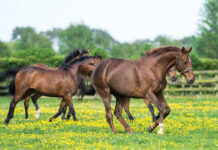
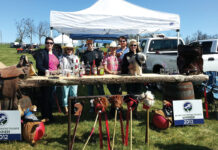
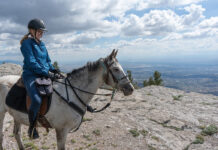

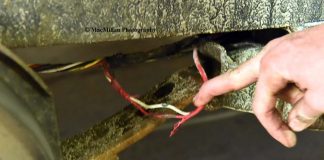

Sounds like work and alot of fun.
Alway plan ahead, and let someone know where you will beheading. Safety first!!